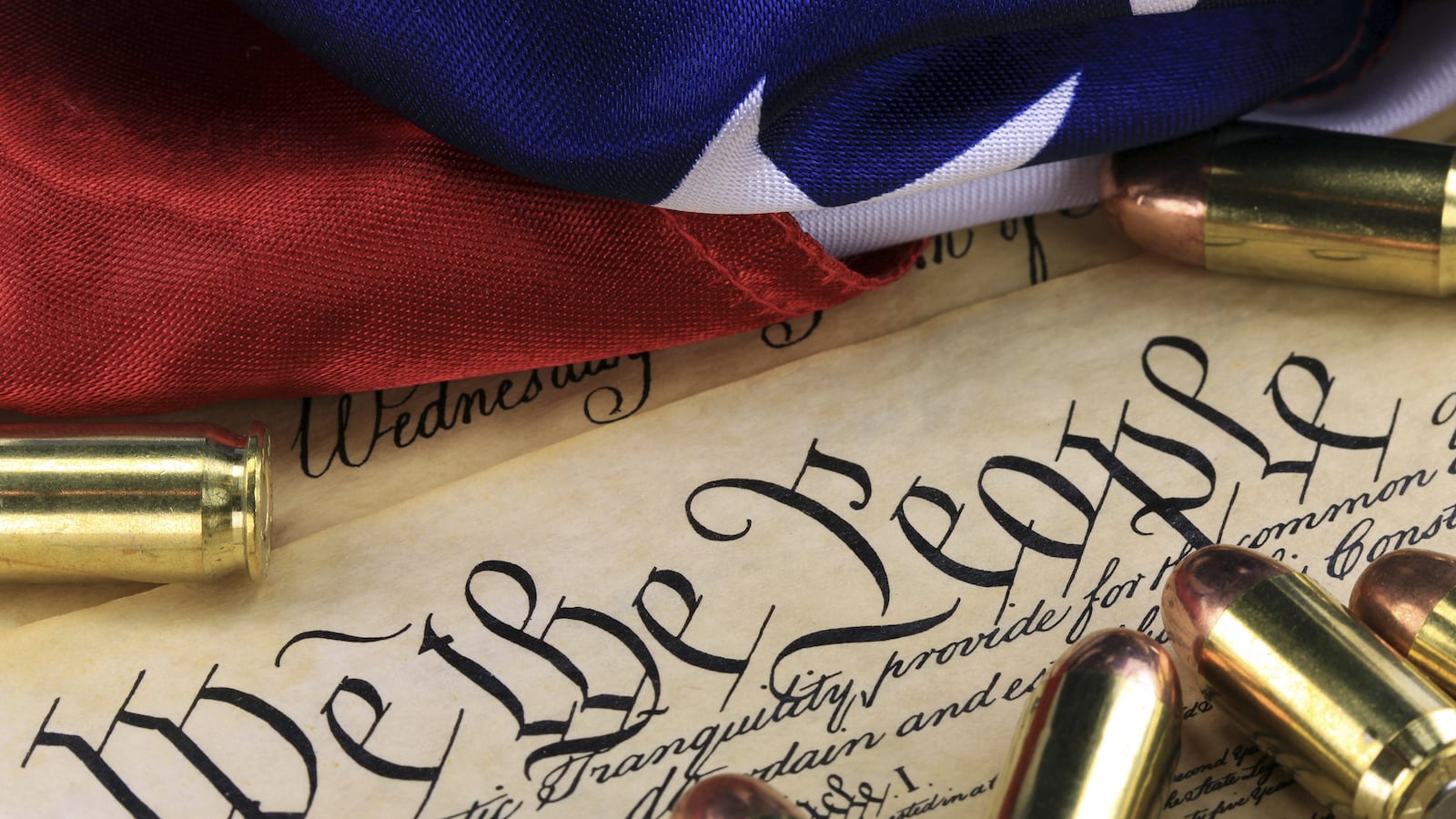“Public sentiment is everything. With public sentiment, nothing can fail; without it, nothing can succeed.”
In his tart, concise The Second Amendment: A History, Michael Waldman quotes that statement from Abraham Lincoln by way of explaining that judges, even Supreme Court justices, are not much different from politicians when it comes to public opinion: It informs, even where it does not direct, their actions and decisions.

Waldman argues persuasively that it was no coincidence that the Supreme Court only got around to affirming the individual’s right to gun ownership in 2008—by then the court’s decision in District of Columbia v. Heller was more or less in line with public opinion, which itself had changed markedly over time, thanks largely to a two-pronged propaganda blitz by the National Rifle Association and the equally vociferous arguments of conservative legal scholars. In 1959, a Gallup poll reported that 60 percent of Americans favored banning handguns; by 2012, that figure had dropped to 24 percent. Waldman is not cynically suggesting that the Supreme Court is a slave to public opinion. Rather, he is pointing out what should be obvious but is too often ignored: The court does not operate in a vacuum. Our view of the Second Amendment, he writes, “is set at every stage [of the nation’s history], not by a pristine constitutional text, but by the push-and-pull, the rough-and-tumble of political advocacy and public agitation.”
This typically shrewd observation stamps Waldman as not just a preeminent legal scholar but a sensible person, someone worth reading, in other words, even if you don’t agree with him. Not that many people who don’t agree with him are likely to read this book, except to attack it. The debate over guns in this country rarely attracts the undecided or anyone comfortable living with shades of gray.
That’s ironic, because the Second Amendment to the Constitution contains some of that document’s most ambiguous language: “A well regulated militia, being necessary to the security of a free state, the right of the people to keep and bear arms, shall not be infringed.” People have been debating that language almost since it was written. “Its foggy wording and odd locution stand out in the Constitution,” Waldman writes. “Lawyers and scholars debate its commas and clauses. For 218 years, judges overwhelmingly concluded that the amendment authorized states to form militias, what we now call the National Guard. Then, in 2008, the U.S. Supreme Court upended two centuries of precedent. In the [Heller case], an opinion written by Justice Antonin Scalia declared that the Constitution confers a right to own a gun for self-defense in the home.” The import of this recent sea change in judicial thinking can be measured by the fact that Waldman devotes roughly half of his book to an analysis of Scalia’s ruling and its impact.
Scalia styles himself an originalist, someone who believes that a proper interpretation of the Constitution means divining—and hewing to—the original intent of the Framers. This is a tricky business when it comes to the Second Amendment, since, as Waldman notes, “there is not a single word about an individual right to a gun for self-defense in the notes from the Constitutional Convention. Nor with scattered exceptions in the records of the ratification debates in the states. Nor on the floor of the U.S. House of Representatives as it marked up the Second Amendment.
“People ask who is right? Did the Second Amendment protect militias, or an individual right to a gun? The answer: Both, and neither. It protected the individual right to a gun… to fulfill the duty to serve in a militia. To the Framers, even our question would make little sense. To us, today, their answer makes little sense.”
Heller’s book is valuable not just as a legal history but as a cultural history as well. He walks us through changing American opinions about gun ownership, safety, race, violence, and the rule of law, and he is not afraid to cite facts and statistics that make the subject more, and not less, complicated. In the last four decades, for example, while the number of guns in the U.S. continued to climb, the number of gun owners dropped, from 50 percent of all households in the ’70s to 34 percent today. And gun violence has declined as well: The homicide rate dropped 50 percent from 1993 to 2010. Criminologists and sociologists have no simple explanation for these trends. “The NRA, of course, has a theory,” Waldman notes. “It heavily promoted the idea that an armed population is the reason crime is dropping.” But the NRA knows no doubt: In the wake of the Sandy Hook massacre, its solution to prevent similar tragedies was to install armed guards in every school.
Reading this lucid book while the Santa Barbara shootings were all over the news, I sometimes felt like I was straddling two universes. On the one hand, there was a thoughtful legal scholar laying out the debate and controversy over the Second Amendment with common sense and an unfailing wit (Scalia’s tortuous decision in Heller, Waldman says, “has the feel of an ambitious Scrabble player trying too hard to prove that triple score word really does exist”). On the other hand, there was the latest example of the sort of incomprehensible gun slaughter that we as a nation seem increasingly powerless to understand or prevent.
I would love to think that people on both sides of this issue could read Waldman’s cogent analysis and learn something. I wish that they could at least be persuaded that the issue is not necessarily clear-cut, that debate is both desirable and possible. But I don’t believe any of that, not for a single second. Michael Waldman has made me a better educated American, but he has not made me more hopeful. No one could.



